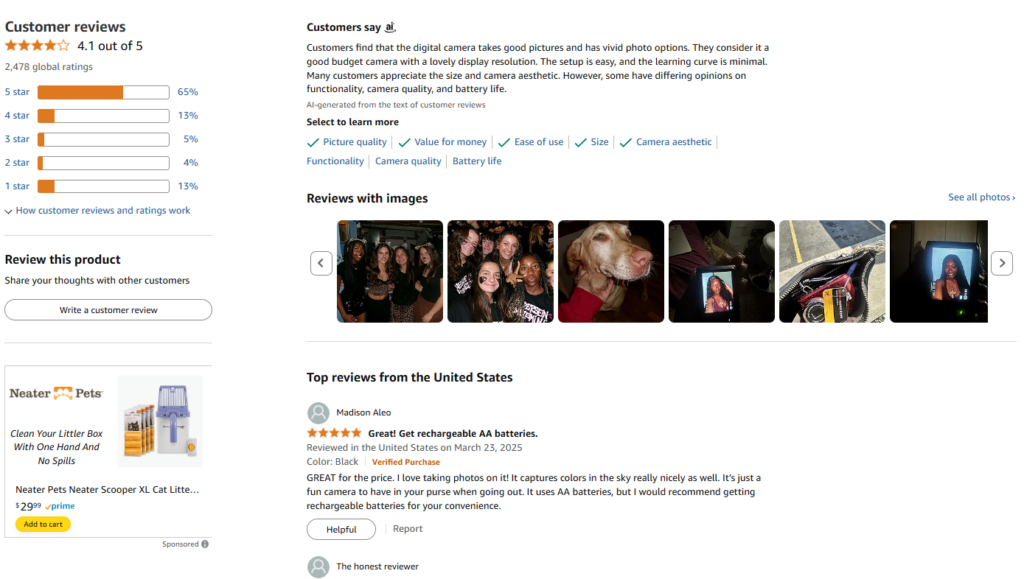The term “digital shelf” gets thrown around a lot in e-commerce but what does it really mean for you as an e-commerce manager? At its core, the digital shelf represents how your products appear across online marketplaces, retailer websites, and search engines. It’s the virtual storefront where customers make purchasing decisions.
However, not all digital shelf data is created equal. Some metrics have the power to transform your strategy, while others might just clutter your dashboard. To help you focus on what matters most, we’ve outlined the six critical types of digital shelf data every e-commerce manager should use and track.
Why Digital Shelf Data is a Game-Changer
Before we jump into the specific data types, it’s important to understand why digital shelf data is so significant. These insights go beyond just tracking product sales—they provide visibility into performance metrics like search rank, product availability, customer reviews, and competitive pricing.
Without using digital shelf data effectively, businesses risk falling behind competitors, missing key opportunities, and losing market share. For e-commerce managers, this data opens the ability to fine-tune listings, meet customer expectations, and convert browsers into buyers.
Now, let’s explore the six digital shelf data types vital for success.
1. Product Content Data

High-quality product content is the backbone of any digital shelf strategy. But how do you know if your content is up to par? That’s where product content data comes in.
Key Metrics to Track
- Completeness of product pages (e.g., images, descriptions, specifications)
- Quality of product titles and descriptions (are they optimized for SEO?)
- Use of rich media like videos and 360-degree imagery
Why It Matters: Without accurate, complete, and engaging content, your products may underperform—even if they’re competitively priced. For example, missing product specifications can leave potential buyers hesitant to add items to their cart. Use product content data to identify gaps and improve conversion rates.
Pro Tip
Regularly audit your product listings using a data-driven approach. Tools like Icecat can help ensure your product content meets both customer and retailer standards across e-commerce environments.
2. Availability (or “Out-of-Stock”) Data
Nothing kills sales faster than out-of-stock products. Availability data helps you stay on top of inventory, ensuring your products remain consistently stocked across all platforms.
Key Metrics to Track
- Out-of-stock percentages for SKUs
- Product availability by location or market
- Distribution gaps across key regions
Why It Matters: When customers encounter “Out of Stock,” they’re likely to turn to competitors. Monitoring availability data helps resolve inventory management issues quickly, reducing lost sales opportunities.
3. Pricing Data
E-commerce shoppers are savvy, and pricing transparency means you constantly compete for the best deal. Pricing data shows how your prices compare to competitors and helps you remain competitive without sacrificing profitability.
Key Metrics to Track
- Price parity across marketplaces (are you offering consistent pricing?)
- Competitor pricing trends and promotions
- Average price changes over time
Why It Matters: When your price isn’t competitive, shoppers often abandon carts or seek alternatives. On the flip side, unmonitored promotions might erode your profit margins. Pricing data ensures you stay in the sweet spot—competitive but profitable.
Pro Tip
Leverage dynamic pricing tools like Pricefx or Intelligence Node to adjust your prices in real-time based on competitor activity and market demand.
4. Search Performance Data
Your products won’t sell if customers can’t find them. Enter search performance data, which shows the ranking of your products within retail search engines or marketplaces.
Key Metrics to Track
- Search ranking for key product categories
- Keywords generating impressions and clicks
- Percentage of traffic from organic search vs. paid placements
Why It Matters: Search ranking drives visibility and visibility drives sales. By understanding search performance data, you can optimize product titles, bullet points, and descriptions for your audience’s most-used terms.
Pro Tip
Identify your best-performing keywords and integrate them into your product descriptions, page titles, and even image alt text to improve both discoverability and SEO rankings.
5. Customer Review Data

Shoppers trust other shoppers, which is why customer reviews and ratings can make or break your product listings. Customer review data gives you insight into what buyers love (or don’t love) about your products.
Key Metrics to Track
- Average product ratings
- Number of customer reviews per SKU
- Common themes in customer feedback (e.g., quality, value, usability)
Why It Matters: Reviews provide social proof for potential buyers, strengthening their confidence in your product. They’re also an invaluable source of feedback, highlighting areas for improvement in products or listings.
Pro Tip
Encourage user-generated content by sending follow-up emails post-purchase asking for reviews or offering incentives like discounts for leaving feedback. Nothing markets your products better than genuine, honest reviews from satisfied customers who have already made a purchase and are eager to recommend them.
6. Competitive Benchmarking Data
The digital shelf isn’t just about your products—it’s about how your brand stacks up against competitors. Competitive benchmarking data gives you a pulse on the broader market landscape.
Key Metrics to Track
- Market share in specific categories
- Competitor product content quality compared to yours
- Differences in pricing or promotions
Why It Matters: Knowing where your competitors excel can refine your strategy. For instance, if competitors have better visual content or more robust shipping options, you can adjust accordingly.
How to Put Digital Shelf Data to Work
Tracking these six types of digital shelf data is only half the battle. To truly make an impact, you must act on your insights. This could mean updating product descriptions to improve search rankings, revising pricing based on competitive benchmarks, or addressing recurring negative feedback in customer reviews.
Icecat’s enriched product data helps you take these insights further. By ensuring your listings are always accurate, engaging, and optimized for search, you can boost visibility, enhance the shopping experience, and ultimately drive more conversions.
Transform your digital shelf with Icecat and boost your product visibility today!

My is a Digital Marketer who aligns product strategies with customer needs, driving impactful campaigns and business growth.



